That scene in Black Panther, when Erik Kilmonger corrects a museum curator when she whitesplains the origins of an African artefact to him and questions how the museum got it in the first place, hits close to home for most people of colour. It’s frustrating for us to see our history misrepresented and tokenised in museums abroad, so it becomes crucial than Indian museums curate thoughtful exhibitions to balance out the Westernised perspectives that we’re so used to.
https://www.youtube.com/watch?v=Z2KJxdvckEk
To stay culturally relevant and keep up with the times, museum curators need to visibly connect their exhibitions to the objects’ political history and get their audience to engage critically with our collective history.
Museums are never apolitical spaces, and by not engaging in the politics of their pieces, they stand to uphold unequal dominant narratives. They are never just neutral reflectors of our past, and are often poised as the authorities on how things went down.
The idea of decolonising museums has been gaining ground recently, with repatriation campaigns and a movement in New York grabbing the public’s attention. These campaigns call upon museums to recognise that these institutions become sites for reproducing colonial ideas if they do not critically examine the roots of their collections.
This means holding institutions, like museums, accountable, questioning the origins of the artefacts themselves, and acknowledging and laying bare the embedded power structures in museums’ collections. It means disrupting mainstream understandings of history with a little more honesty.
India and the world
I walked through Delhi National Museum’s exhibition, India and the World: A History in Nine Stories hoping for a history that reckons with the uncomfortable truths of our past and possibly offers up its collection of art as a way of healing.
The exhibition contextualises India’s winding path from the Indus Valley to our current moment, within broader global movements. It is a collaboration with the British Museum, London; National Museum, New Delhi and the Chhatrapati Shivaji Maharaj Vastu Sanghahalaya (CSMVS), Mumbai to commemorate 70 years of Indian independence. The idea of celebrating Indian independence by collaborating with the very country we wrested our independence from is admittedly ironical.
I went in thinking this project could be a step towards healing the fissures of colonisation if these conversations were given room in the exhibition, or it could be another missed opportunity.
One of the first things I noticed were the tactile displays on the walls, written in braille for a more inclusive viewing experience. Already this was off to a good start.
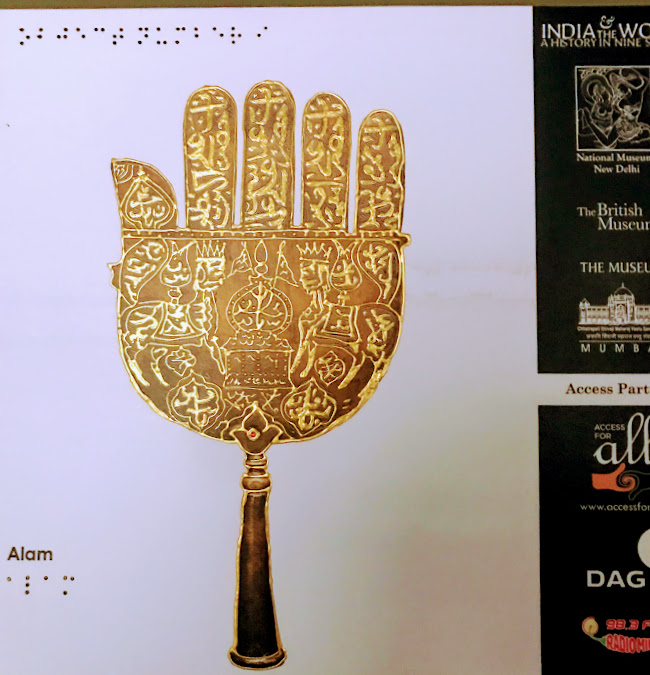
Braille display of Alam, Deccan, India, AD 1770–1790. Credit: Devina Buckshee
The exhibition places specific objects next to each other to provoke a dialogue on the linkages spanning across continents and times. It starts at the very beginning, around 1,700,000 years ago in 2000 BC. We see several pots placed together, showing us how different civilisations started developing similar objects around the same time, despite having no apparent physical connection to each other. J.D Hill, co-curator of the exhibition, explains that this was because everyone shared the same problem – we were experimenting with early agriculture and needed containers for storing grains. And so began the tradition of pottery, laying evident the inherent commonalities of humankind. In a climate of division, this exhibition gently reminds us of our shared past, and that certain advancement was made possible only through trade and collaboration.
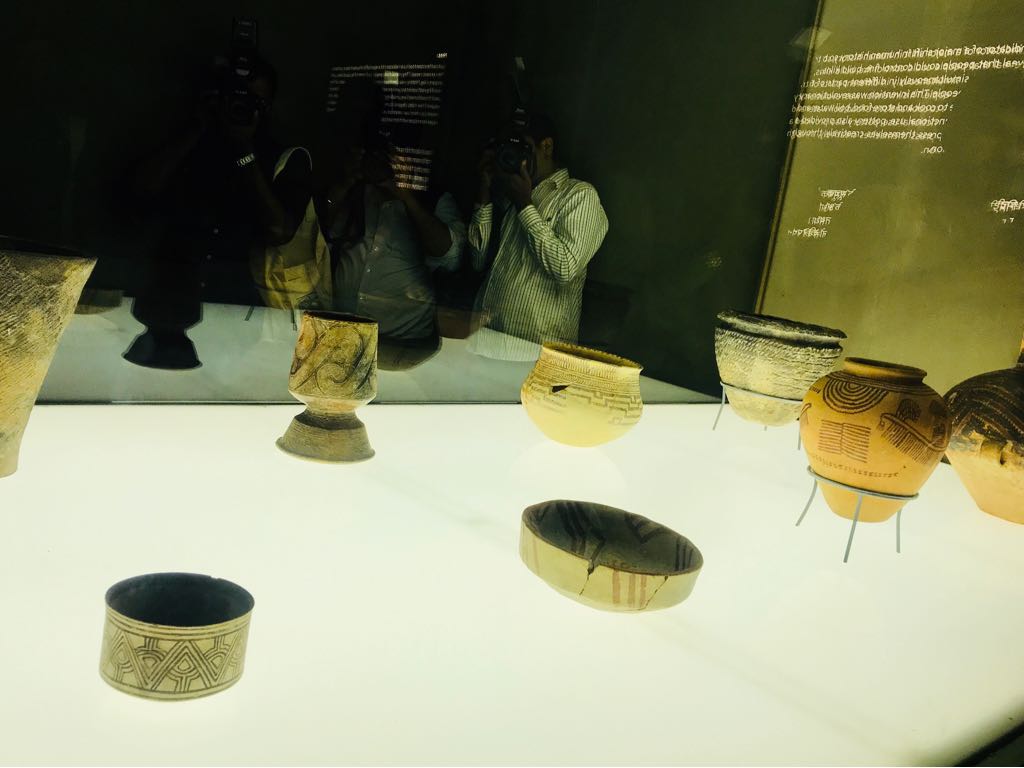
Pots from Japan, 2600–1300 BC; Balochistan, Pakistan, 3500–2800 BC; Gansu, China, 2500–2300 BC; Naqada, Egypt, 3650–3360 BC; Turkey, 5000 BC; Vietnam, 3000–1500 BC; Iraq, 6500–6000 BC; Mortlake, United Kingdom, 3100–2800 BC Credit: Devina Buckshee
Everything in the exhibition was similarly placed to be a conversation starter. The famous dancing girl of Mohenjo-Daro was contextualised with other objects to give us more insight – instead of seeing her as isolated, we could now see her placed within her city, and examine her role within the cityscape. This inspired a conversation on women’s role in ancient cities, especially cities in the Indian subcontinent. We saw women beyond the tropes of ‘dancer’ or ‘goddess’, as everyday guarantors, property owners and women-about-town.
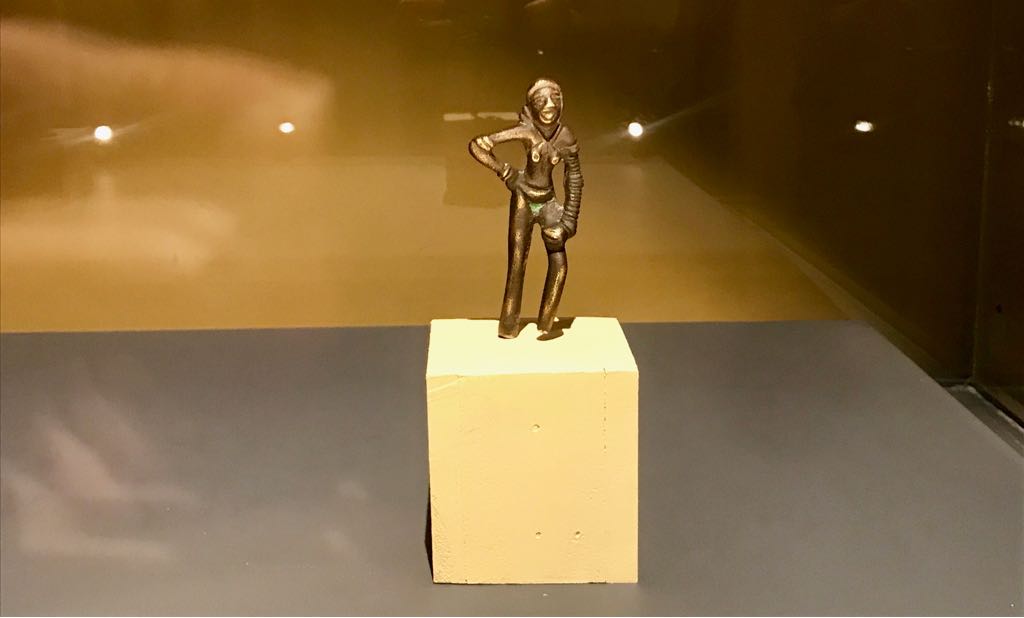
‘Dancing Girl’, Mohenjodaro, Sindh, Pakistan, 2500 BC Credit: Devina Buckshee
The nuances and politics of the displayed objects were addressed in the section, ‘Quest for Freedom’ where the Indian freedom struggle was placed in the context of similar struggles against oppression. The narratives of resistance and victory against colonisation came from oppressed people, which made this section especially engaging for me. It was, however, disappointing to see subaltern art primarily in the context of suffering, as it has always been resigned to. Even the re-imaginings, such as the Nigerian depiction of Queen Victoria, was still in a context where the western world is centered.
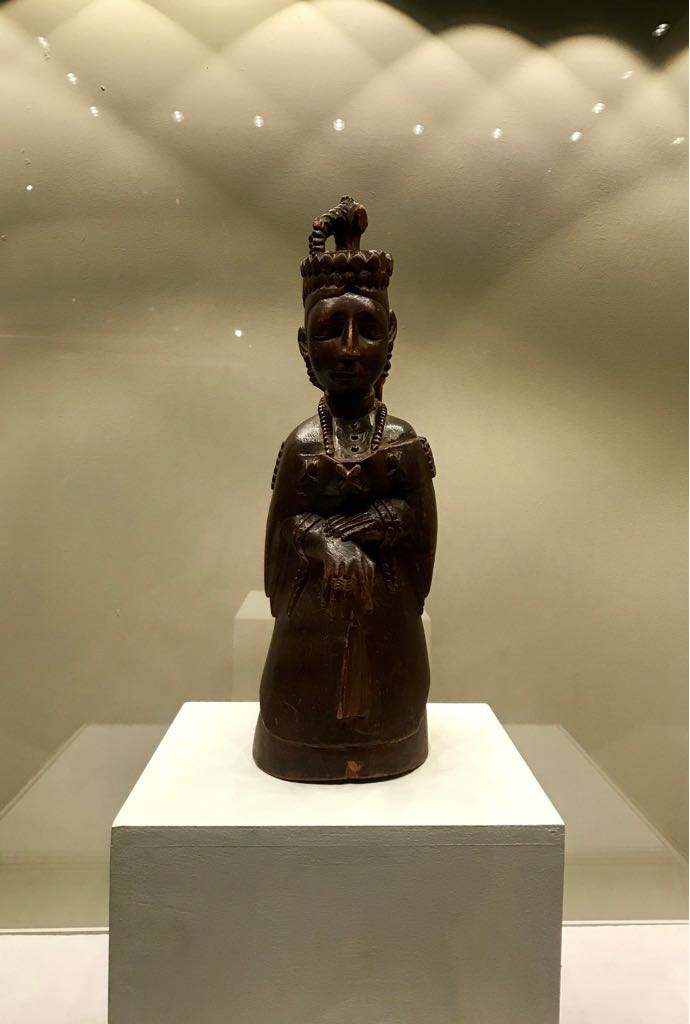
Queen Victoria, Nigeria, AD 1875–1900 Credit: Devina Buckshee
The Throne of Weapons by Cristóvão Canhavato, however, was a powerful, subversive work of art, moving beyond the stereotypes of war in Africa. The sculpture is a throne made from melted weapons that were used in Mozambique’s civil war and the description explained that none of the weapons used in the war were actually made in Africa. By highlighting the link between Africa’s struggles to the global arms trade in the West, the exhibit raises important questions about Western complicity in African problems.
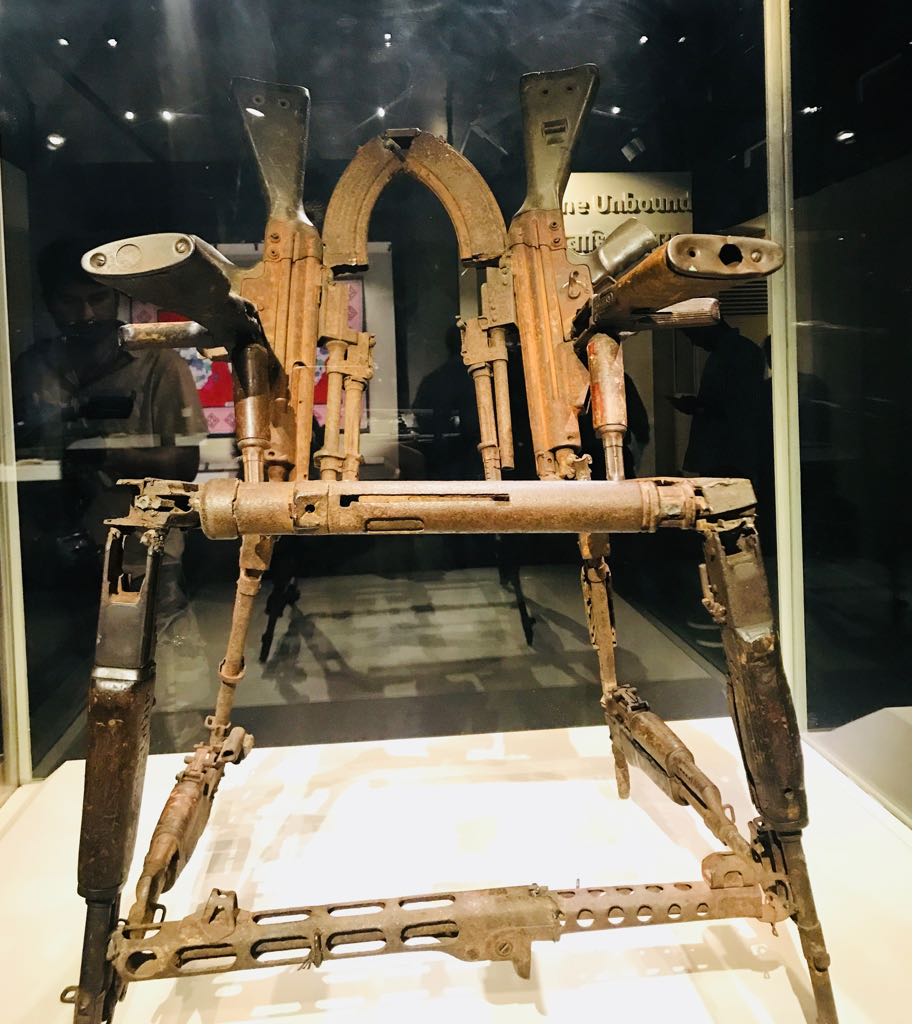
Throne of Weapons by Cristóvão Canhavato, Maputo, Mozambique, AD 2001 Credit: Devina Buckshee
Another interesting piece, the ‘Untold Intimacy of Digits‘ by Raqs Media Collective connected the Indian freedom struggle to current day concerns over data and privacy. This transcended traditional re-tellings of Indian independence by highlighting links to the present, echoing the central theme of new linkages.

Untold Intimacy of Digits by Raqs Media Collective, New Delhi, India, AD 2011 Credit: Devina Buckshee
The exhibition, however, doesn’t delve too much into the murkier aspects of trade – looting, trauma and colonisation. British collectors who donated several pieces of art from around the world were still largely painted as benevolent, without any comment on how they acquired these possessions in the first place. I’m not trying to chastise any individual collector, but there was no larger conversation on the, often nefarious, context of their collections.
Decolonising Museums
With so much now known about Indian history, the exhibition did not initiate or depict any inquiries into the journeys of the displayed objects. It’s important to put forward nuanced understandings that acknowledge our whole history, including the darker legacies that we may not want to grapple with. For example, the piece, ‘The Grand Vazir’, bequeathed by Sir Hans Sloane via the British Museum, could have been looked at more critically. We know it came from Turkey in AD 1620 but some insight into its trade route could have revealed a new side of history for exhibit-goers.
Overall, although the exhibition’s narrative was specifically India-centric, it could have incorporated more underrepresented objects from underrepresented Indian peoples. In this day and age, it could have pushed the political boundaries of art and history further.
As India and the World shows, there are many ways to think about history and it’s about time that purposely subdued stories are heard – for starters.

